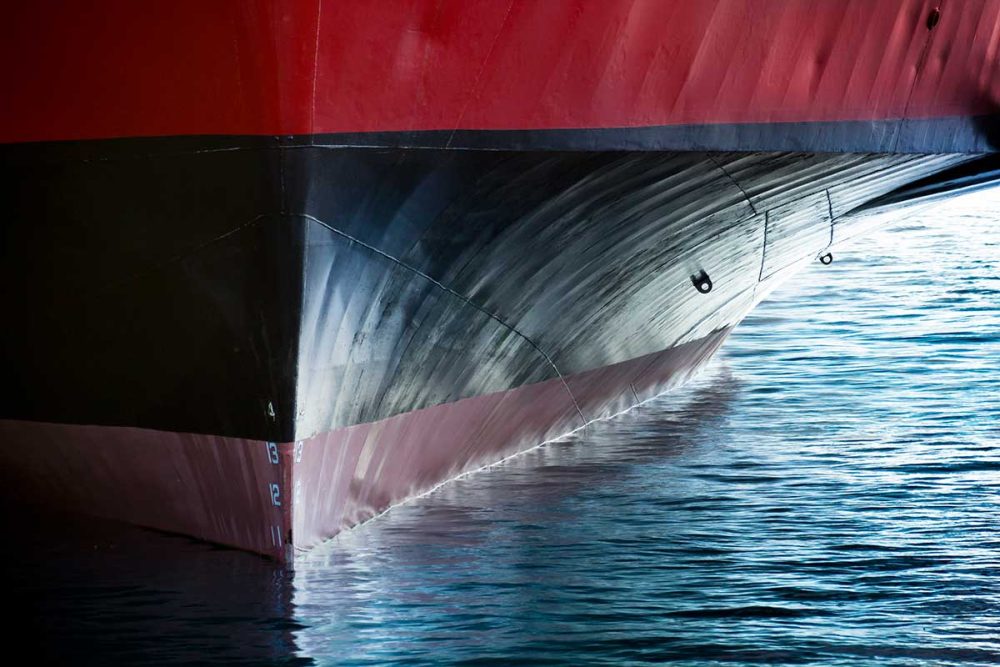All Blogs
Sail Smoothly: The Benefits of Investing in High-Quality Paint for Your Boat
Boat owners understand the importance of having a vessel that looks great and functions well. Choosing the right boat paint is important.
One of the most important factors in achieving both of these goals is investing in high-quality paint for your boat. In this article, I will discuss the benefits of using marine paint, the different types of marine paint available, how to choose the right paint for your boat, and tips for preparing and painting your boat.
What is Marine/Boat Paint?
Marine paint is specially formulated to protect boats from the harsh conditions of the water, including saltwater, UV rays, and moisture. It is designed to adhere to various surfaces, including fiberglass, aluminum, and wood. Marine paint is also resistant to fading, chalking, and cracking, making it ideal for use on boats.
Marine paint comes in a variety of formulations, including one-part and two-part epoxy paint, polyurethane paint, and bottom paint. Each type of paint has its own unique properties, and the type you choose will depend on the type of boat you have and the conditions it will be exposed to.
The Benefits of Using Marine Paint for Your Boat
Investing in high-quality marine paint for your boat has numerous benefits. Some of the most significant benefits include:
Protection from Saltwater and UV Rays
Marine paint is designed to protect boats from the corrosive effects of saltwater and the damaging effects of UV rays. Over time, exposure to saltwater and UV rays can cause fading, chalking, and cracking of the paint, as well as damage to the underlying structure of the boat. Marine paint provides a protective barrier that helps prevent these issues.
Improved Appearance
A fresh coat of paint can transform the appearance of your boat, making it look new and well-maintained. Marine paint comes in a variety of colors and finishes, allowing you to customize the look of your boat to your liking.
Increased Resale Value
A well-maintained boat with a fresh coat of paint will have a higher resale value than a boat with a poorly maintained or damaged paint job. Investing in high-quality marine paint can help protect and maintain the value of your boat over time.
Different Types of Marine Paint
As previously mentioned, there are several types of marine paint available. The type you choose will depend on the type of boat you have and the conditions it will be exposed to.
One-Part Epoxy Paint
One-part epoxy paint is a single-component paint that is easy to apply and provides good protection against saltwater and UV rays. It is an excellent choice for boats that will be used in freshwater or mild saltwater environments. One-part epoxy paint is also less expensive than other types of marine paint.
Two-Part Epoxy Paint
Two-part epoxy paint is a more durable and long-lasting option than one-part epoxy paint. It is a two-component paint that requires mixing before application. Two-part epoxy paint provides excellent protection against saltwater and UV rays and is an ideal choice for boats that will be used in harsh saltwater environments.
Polyurethane Paint
Polyurethane paint is a high-gloss, two-component paint that is resistant to fading, chalking, and cracking. It is an excellent choice for boats that will be used in sunny environments, as it provides superior UV protection. Polyurethane paint is also resistant to abrasion and chemicals, making it a good choice for boats that will be used for fishing or other activities that may cause wear and tear.
Bottom Paint
Bottom paint is a special type of paint that is designed to protect the bottom of your boat from fouling, which is the buildup of barnacles, algae, and other marine organisms. Bottom paint contains biocides that prevent fouling and can be applied to various types of underwater surfaces, including fiberglass, wood, and metal.
We have an undercoat and a primer for maximum protection

Choosing the Right Marine Paint for Your Boat
Choosing the right marine paint for your boat is essential to achieving a long-lasting and durable finish. Here are some factors to consider when choosing marine paint:
Boat Type
The type of boat you have will dictate the type of marine paint you should use. Fiberglass boats require a different type of paint than aluminium or wooden boats. Be sure to choose a paint that is compatible with the material of your boat.
Water Conditions
The conditions your boat will be exposed to will also impact the type of marine paint you should use. If your boat will be used in harsh saltwater environments, you will need a more durable and long-lasting paint than if it will be used in freshwater or mild saltwater environments.
Colour and Finish
Marine paint comes in a variety of colours and finishes, allowing you to customize the look of your boat. Consider the colour and finish you want before choosing a paint.
How to Prepare Your Boat for Painting
Proper preparation is essential to achieving a smooth and long-lasting paint job for your boat. Here are some steps to follow when preparing your boat for painting:
Clean the Surface
Before painting, you must clean the surface of your boat thoroughly. Use a marine cleaner and a stiff-bristled brush to remove any dirt, grease, and other contaminants from the surface. Rinse the surface with clean water and allow it to dry completely.
Sand the Surface
After cleaning, sand the surface of your boat to create a rough surface that will allow the paint to adhere better. Use a fine-grit sandpaper and sand in a circular motion until the surface is smooth.
Mask Any Areas That Should Not Be Painted
Use painter’s tape to cover any areas of your boat that should not be painted, such as windows, trim, or hardware.
The Painting Process: Tips and Tricks for a Smooth Finish
After preparing your boat, it is time to start painting. Here are some tips and tricks to follow for a smooth and even paint job:
Apply Thin Coats
When applying marine paint, it is essential to apply thin coats to avoid drips and runs. Apply the paint in thin, even coats, and allow each coat to dry completely before applying the next coat.
Use a High-Quality Brush or Roller
Investing in a high-quality brush or roller will help you achieve a smooth and even finish. A cheap brush or roller may leave brush marks or streaks in the paint.
Follow the Manufacturer’s Instructions
Be sure to follow the manufacturer’s instructions for application and drying times. Applying the paint incorrectly or not allowing it to dry properly can result in a poor-quality finish.
Maintaining Your The Paint Job
Maintaining your boat’s paint job is essential to keeping it looking great and protecting it from the elements. Here are some tips for maintaining your boat’s paint job:
Wash Regularly
Washing your boat regularly with a marine cleaner will remove dirt and salt buildup from the surface of your boat, helping to prevent damage to the paint.
Wax from time to time
Waxing your boat regularly with a marine wax will help protect the paint from UV rays and other environmental factors.
Touch Up Any Chips or Scratches
If you notice any chips or scratches in the paint, touch them up immediately to prevent further damage.
Common Mistakes to Avoid
Avoiding these common mistakes can help you achieve a high-quality paint job for your boat:
Rushing the Process
Taking your time and following the proper steps is essential to achieving a smooth and even finish. Rushing the process can result in a poor-quality finish.
Not Preparing the Surface Properly
Proper surface preparation is essential to achieving a long-lasting and durable paint job. Skipping this step can result in a poor-quality finish.
Using the Wrong Type of Paint
Using the wrong type of paint for your boat can result in a poor-quality finish and damage to the underlying structure of the boat.
Conclusion: Why Investing in High-Quality Paint for Your Boat is Worth It
Investing in high-quality paint for your boat is essential to achieving a vessel that looks great and functions well. Marine paint provides protection from the harsh conditions of the water, improves the appearance of your boat, and increases its resale value. Choosing the right type of paint, preparing the surface properly, and following the proper application process will help you achieve a smooth and long-lasting paint job for your boat.
Remember to maintain your boat’s paint job regularly and avoid common mistakes to keep it looking great for years to come. With the right tools and techniques, you can sail smoothly and confidently knowing your boat is protected and looks great.
Contacting us is easy!
Email: [email protected]
Call Us: 01942 884 122
Contact form: https://www.palatinepaints.co.uk/contact-us
Live Chat Service: Press the small blue icon at the bottom left of your screen.

